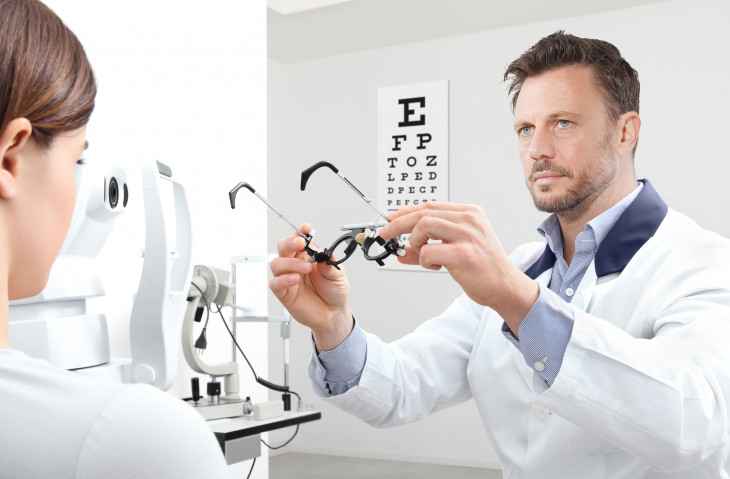Just How an Eye Doctor Can Help Prevent Vision Issues in Chino
Just How an Eye Doctor Can Help Prevent Vision Issues in Chino
Blog Article
Checking Out the most up to date Technological Advancements in Optometry and What They Mean for Optometrists
From the accuracy of Optical Comprehensibility Tomography to the nuanced insights supplied by AI-driven diagnostic devices, these technologies are establishing brand-new standards in person analysis and treatment. As these developments permeate the technique, optometrists are encountered with the difficulty of embracing these tools to boost person end results.
Developments in Diagnostic Equipment
Progressing the area of optometry, advancements in analysis tools have actually reinvented the method eye care professionals analyze and diagnose eye conditions and aesthetic impairments. The previous years has actually experienced significant technical improvements, making it possible for even more thorough and accurate examinations.
Another trick innovation is the intro of advanced corneal topography systems, which map the surface area curvature of the cornea with accuracy. These devices are particularly advantageous for suitable contact lenses and diagnosing corneal problems. Digital retinal imaging has transformed traditional ophthalmoscopy, providing in-depth, breathtaking views of the retina that facilitate complete aesthetic examinations.
The growth of wavefront aberrometry has actually also been crucial, enabling the evaluation of refractive mistakes with unrivaled accuracy (Eye Doctor Optometrist). This modern technology aids in personalizing rehabilitative lenses and enhancing medical end results for refractive surgical treatments. Jointly, these diagnostic innovations equip eye doctors to deliver exceptional patient treatment, guaranteeing very early intervention and customized treatment approaches, eventually boosting visual health and wellness outcomes
AI in Individual Administration
Structure on the foundation of innovative diagnostic tools, the incorporation of expert system (AI) in person monitoring stands for a transformative jump for optometry. AI systems are significantly employed to boost efficiency, accuracy, and personalization in patient care. By assessing vast amounts of data, AI can identify patterns and forecast potential ocular conditions, allowing eye doctors to customize treatments much more effectively. This capacity is important in managing chronic eye diseases such as glaucoma and diabetic retinopathy, where early detection and continuous surveillance are crucial.
Moreover, AI-driven systems promote structured individual communications and management procedures. Automated scheduling, virtual assessments, and individualized follow-up strategies not just enhance person complete satisfaction but also optimize time management for specialists. These systems can triage clients based on the necessity of their problems, ensuring that those in important demand receive timely interest.
Moreover, AI improves decision-making by providing optometrists with evidence-based referrals and treatment paths. By incorporating data from digital wellness records, AI tools supply understandings that inform medical choices, lowering the risk of mistakes and enhancing client end results. As AI continues to advance, its function in individual administration will likely increase, improving the landscape of optometric treatment.
Advancements in Retinal Imaging
In the world of optometry, retinal imaging has seen amazing technological developments that are enhancing diagnostic capacities and individual treatment. Developments such as Optical Comprehensibility Tomography (OCT) and fundus photography have actually reinvented exactly how optometrists evaluate the retina and envision.
Boosted imaging modalities like OCT angiography are additional refining diagnostic accuracy. Eye Doctor Optometrist. Such innovations help with the recognition of min retinal modifications that might indicate disease progression.
Moreover, innovations in synthetic intelligence are augmenting retinal imaging by making it possible for automatic evaluation of huge datasets. These systems aid eye doctors in recognizing patterns a sign of pathology, therefore improving diagnostic precision and performance. Collectively, these innovations are transforming retinal imaging into a keystone of modern-day eye treatment, enhancing outcomes and increasing restorative possibilities.
Teleoptometry's Expanding Duty
Teleoptometry is this website significantly becoming a crucial component of eye treatment, driven by developments in electronic interaction and analysis tools. As optometry welcomes electronic makeover, teleoptometry facilitates remote examinations, allowing eye doctors to prolong their solutions beyond traditional boundaries. This is especially beneficial in underserved and country areas where access to specialized eye care is commonly limited. By leveraging high-resolution video clip conferencing and progressed retinal imaging, eye doctors can perform thorough eye examinations from afar, making certain timely diagnosis and treatment.
The integration of expert system (AI) further improves teleoptometry, allowing the analysis of visual information and helping in the discovery of ocular conditions such as glaucoma and diabetic retinopathy. AI-powered formulas can quickly analyze complicated imaging data, giving eye doctors with important insights that boost professional decision-making.
Furthermore, teleoptometry sustains continuity of treatment through seamless integration with digital health documents (EHRs), allowing optometrists to preserve extensive client histories. When consulting with various experts., this find makes sure that individuals get customized and regular care even.
Despite these benefits, obstacles stay, consisting of guaranteeing data protection and handling individual assumptions. Nonetheless, teleoptometry stands for a substantial stride towards even more obtainable, effective, and patient-centered eye treatment. As modern technology advances, its duty is poised to expand additionally.

Future Fads in Eye Treatment
A myriad of innovative patterns is readied to improve the future of eye care, driven by technological improvements and the progressing demands of patients. One considerable fad is the combination of expert system (AI) in diagnostics, which assures to improve the precision and effectiveness of eye examinations. AI algorithms can assess large amounts of data from retinal photos, potentially identifying conditions like diabetic person retinopathy and glaucoma earlier than traditional techniques.
Additionally, personalized medication is getting traction in optometry, with genetic screening educating customized treatment plans. This strategy aims to enhance patient end results by tailoring interventions to private genetic profiles. Wearable modern technology, such as wise get in touch with lenses, is likewise coming up, using real-time monitoring of intraocular pressure or sugar degrees, hence providing constant insights right into systemic and ocular wellness.
The fostering of enhanced reality (AR) and digital reality (VR) in training and person education and learning is one more arising trend. These modern technologies supply immersive experiences that can enhance understanding and skills both for clients and eye doctors. As these trends develop, eye doctors must stay abreast of technological improvements to provide innovative care, making sure improved client end results and satisfaction in the dynamic landscape of eye care.
Verdict

Jointly, these diagnostic advancements equip eye doctors to deliver remarkable client care, ensuring early treatment and tailored therapy methods, inevitably improving visual wellness end results.

As these modern technologies continue to evolve, eye doctors have to adjust and integrate them right into method, eventually enhancing workflow performance and boosting the criterion of eye treatment provided to clients.
Report this page